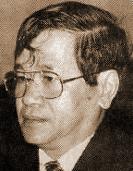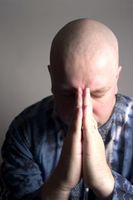MỘT SƯ CÔ TUYỆT THỰC ĐỂ BẢO VỆ MÔI TRƯỜNG

bài viết của Kim Hyun ở Seoul
Ở Seoul, sư cô Jiyul 48 tuổi đang bước vào ngày tuyệt thực thứ 99 để phản đối việc làm đường hầm cho tàu tốc hành ở núi Cheonseong, phía nam tỉnh Gyeongsang. Hiện nay sư cô Jiyul chỉ uống nước sôi và ngậm muối ở trụ sở Hội Phật giáo Jungto ở Seoul. Cô thà chết chứ không chịu thoả hiệp vơi dự án xây dựng này. Các nhà môi trường học cho biết núi Cheonseong là nơi cư trú cho hơn 30 loài động vật đang có nguy cơ bị diệt chủng và của vùng đầm lầy đã có hàng ngàn năm. Núi này là nơi ở của những con kỳ nhông từng rất phổ biến ở các vùng núi của Hàn quốc, nhưng bây giờ đã dần dần biến mất sau khi các con đường mới được xây dựng gần đó. Ông Lee Heon-seok, đại diện cho hội công dân bảo vệ súc vật, một tổ chức năm ngoái đã kiện chính phủ về dự án xây dựng đường hầm cho biết, “Điều mà sư cô Jiyul và tất cả chúng tôi đòi hỏi trong suốt 3 năm nay là phải có một cuộc nghiên cứu tổng thể về ngọn núi, để biết bao nhiêu loại thú vật đang có nguy cơ bị diệt chủng ở đó và việc xây dựng này sẽ ảnh hưởng đến chúng như thế nào.”Họ yêu cầu Tổng thống Roh Moo-hyun giữ lời hứa của ông khi vận động tranh cử là sẽ xem xét lại từ đầu dự án xây dựng đường hầm, và xem xét lại những tác động môi trường của dự án đó. Ngọn núi này chỉ cách Busan, quê hương của tổng thống Roh có nửa tiếng lái xe. Theo lời ông Lee, “Vấn đề ở đây không phải là thái độ quá cứng rắn của sư cô Jiyul, mà vì tổng thống đã không giữ lời hứa và khiến cho một người phải liều mạng sống của mình để đấu tranh.”Trong vụ kiện năm ngoái, do 240.000 người cùng ký đơn, toà án đã tuyên bố là dự án xây dựng đường hầm này không gây thiệt hại nào cả, và toà phúc thẩm cũng tán thành quyết định này. Bộ Môi trường cũng nói rằng Chính phủ sẽ không đình chỉ dự án này, vì một công trình nghiên cứu suốt 2 năm qua của ngành đường sắt cho biết các loài động vật có nguy cơ bị tiệt chủng sống khá xa nơi người ta đào đường hầm. Vùng đầm lầy cũng cách đó 800m, đủ xa để không bị ảnh hưởng. Ông Kim Chung-heung, nhân viên phụ trách bộ phận nghiên cứu ảnh hưởng môi trường cho biết “Kỹ thuật xây dựng được dùng để đào đường hầm là loại kỹ thuật có tính đến ảnh hưởng sinh thái. Nếu chính phủ có thể đình chỉ dự án này thì họ đã không để cho sư cô đó tuyệt thực cho đến mức nguy hiểm tính mạng như hiện nay.”Tuy nhiên Thủ tướng Lee Hae-chan tháng trước đã công nhận rằng dự án xây dựng đường tàu tốc hành là một thất bại của chính sách quốc gia, và ra lệnh cho văn phòng của ông phân tích tìm hiểu nguyên nhân. Số hành khách hàng ngày không bằng một phần ba số hành khách mà người ta dự định là 220.000 ngươi/ngày. Các nhóm bảo vệ môi trường cho rằng không những dự án đường hầm ở núi Cheonseong mà ngay cả nhứng dự án ở các nơi khác cũng nên bị đình chỉ, vì càng nhiều tàu chạy thì sự thâm hụt tài chánh càng cao.Sư cô Jiyul phát biểu trong một bài báo của cô rằng “Dân chúng theo dõi việc tuyệt thực của tôi và lo lắng về sức khoẻ của tôi, nhưng tốt hơn họ nên quan tâm về ngọn núi và những nỗi đau của nó. Tôi muốn hỏi họ rằng họ muốn chọn cái gì cho con cháu của họ - một đường hầm tối đen chỉ để rút ngắn chuyến đi của họ 10 phút, hay là một con đường núi yên tĩnh nơi họ có thể đi dạo trong không khí trong lành và những làn gió mát.”
(Liễu Pháp dịch)
Buddhist Nun Risks Life for Sake of Mountain
Nun JiyulBy Kim HyunSEOUL, Feb. 1 (Yonhap) --
Bulldozers dug and the noise of cracking rocks echoed Tuesday at the foot of Mount Cheonseong, South Gyeongsang Province, where a tunnel for high-speed trains will be completed in several months.In Seoul, a Buddhist nun entered the 99th day of a fast in an attempt to halt the construction. Nun Jiyul, 48, who left her temple at the mountain three years ago to stop the project, awaited the government's response to her life-or-death appeal."She's enduring with her will, but soon there will be a time when she reaches a point her body won't be able to recover," Monk Beopryun, leader of Jungto Society, an Buddhist organization promoting environmental issues, said a press conference Monday."It's frustrating that the society and the people cannot solve the problem until someone's life is ended," he said.Nun Jiyul has only been consuming boiled water and salt during her fast at Jungto Society headquarters in southern Seoul. She would give up her life rather than compromise, Monk Beopryun said.Environmentalists and academics say Mount Cheonseong is home to about 30 endangered species and marshlands that are thousands of years old. For example, the mountain is a rare habitat for the salamander, which used to be a common in Korean mountain valleys but gradually disappeared after new roads and travel attractions were built nearby."What Nun Jiyul and all of us have been asking for during the past three years is a thorough research on the mountain -- how many endangered species are living there and how the construction will affect their lives," said Lee Heon-seok, representative of the Citizens' Action for Salamander Lawsuit, which filed the lawsuit against the government's tunnel construction last year.Claiming the salamander is a plaintiff whose right to live is threatened by the construction, the group demanded the government to first conduct environmental impact research on the mountain. They demanded President Roh Moo-hyun to keep his election pledge to "look at the tunnel project from the beginning" and reconsider its environmental effect. The mountain is only a half-an-hour drive from Roh's hometown, Busan, 453 km southeast of Seoul."The issue here is not Nun Jiyul's stubbornness. It is the fact that the president broke his promise and made someone risk her life," Lee said.In its decision on the lawsuit, brought by 240,000 individuals last year, a court said no damage will occur from the construction, and an appeals court upheld the ruling.The Ministry of Environment says the government is not likely to halt the construction, as a study by the railway authorities over the past two years has shown endangered species live far away from the tunnel site. Marshlands were also found to be 800 meters above it, far enough that they will not be damaged."The construction technology used to build tunnels underground, rather than at ground level, is an eco-friendly technology as we see it from our experience," Kim Chung-heung, an official of the ministry's impact assessment division said."If the government could afford to accept (the demand for halting the construction), it wouldn't have let (Nun Jiyul's) hunger strike go on to the point that her life is threatened," he said.According to some experts, the controversy over the Mount Cheonseong tunnel project is a legacy of the country's past dictatorial governance. The military dictatorship in the 1970s promoted a development drive that excluded local communities from the decision-making process. Such a tradition goes on although local communities have become more vocal on their environmental concerns, they said."Past military regimes promoted industry-first and growth-first ideologies. Such governance excluded ecological issues and local concerns," Hong Seong-tae, sociology professor of Sangji University in Seoul, said.The system is now prompting a series of conflicts with local residents and environmentalists, such as disputes over the construction of a nuclear waste disposal plant on Wido Island off the southwest coast and a tidal flat reclamation project in Buan, located in the same region."Government agencies give tremendous-budget orders to construction companies, and the companies go ahead without such legal processes as an environmental impact research," he said.Indeed, the origin of South Korea's high-speed train service project goes back to its military-backed government in 1990. Then general-turned president Roh Tae-woo promoted it as his election pledge, which analysts now say was more of a political calculation than a state project. It lacked long-term vision and thorough research on economic and environmental costs, they say.According to government data, the project's initial budget was 5.8 trillion won. It surged to 17.6 trillion won under the following administration of Kim Young-sam and has been readjusted to 18.4 trillion won. Its planning underwent a total of 232 revisions.Prime Minister Lee Hae-chan recognized last month that "the high speed train service project is a representative failure of national policy" and ordered his office to analyze the reasons. Daily passengers have been less than a third of the originally estimated 220,000 people, he said.Environmental groups claim that not only the Mount Cheonseong tunnel project but the ongoing construction in other areas should also be suspended. The more the train runs, the higher the deficit rises, they say."People look at my fast and worry about my health, but they should look at the mountain and its pain," Jiyul said in a collection of writings from her diary, "Jiyul, Leaving From the Forest," published last year."I want to ask them which way they will choose for our children -- a dark tunnel that will shorten their trip by 10 minutes or a quiet mountain road they will walk with clean air and cool breeze," she said.

